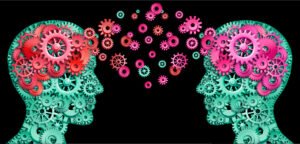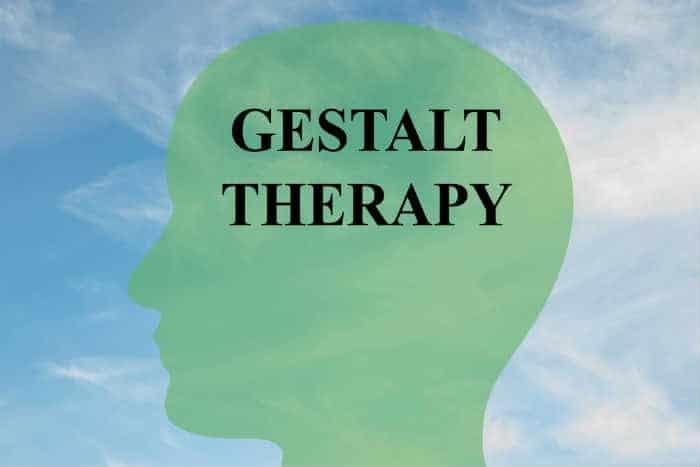Contents
- 1 What Is Gestalt Therapy?
- 2 Principles Of Gestalt Therapy
- 3 How Does It Work?
- 4 Benefits Of Gestalt Therapy
- 5 What Is Involved In This Therapy?
- 6 Effectiveness of Gestalt Therapy
- 7 How Do I Find A Gestalt Therapist?
- 8 Problems Gestalt Therapists Deal With
- 9 An Evolving Art
- 10 How Does It Fit Into Psychology Framework?
- 11 Conclusion
What Is Gestalt Therapy?
 Gestalt therapy is a method of psychotherapy that was developed in the early twentieth century by Max Wertheimer, Wolfgang Köhler, and Kurt Goldstein. Gestalt therapy is based on an understanding that people are more than their cognitive processes; they are also emotional and physical beings who can be helped to make changes at all levels through awareness-raising techniques.
Gestalt therapy is a method of psychotherapy that was developed in the early twentieth century by Max Wertheimer, Wolfgang Köhler, and Kurt Goldstein. Gestalt therapy is based on an understanding that people are more than their cognitive processes; they are also emotional and physical beings who can be helped to make changes at all levels through awareness-raising techniques.
Gestalt therapists believe that what people say they are experiencing now is more accurate than how they view their past; this means that gestalt therapists never look at a person’s self in isolation from their past, present, and future contexts. Instead, gestalt therapists view the person as a whole entity in the context of time. Rather than a collection of elements arranged in space.
Gestalt therapy incorporates a focus on the whole individual, including their thoughts and feelings, as well as the here and now of the therapeutic relationship. The therapist does not attempt to help the client reduce symptoms of anxiety or depression. But instead concentrates on being aware of the here and now of the therapeutic relationship. The client is asked if they would like to work on a particular issue. Or if there is a particular change that they would like to make in their life. The therapist will then use various forms of gestalt therapy techniques to support the client who is going through psychological change.
Principles Of Gestalt Therapy

There are six main principles of Gestalt therapy:
1. The Here-and-now Of The Therapeutic Relationship
Although gestalt therapy involves working on past material. The purpose of this is not to try to change the way people think about the past. But instead to help them make sense of it now in relation to their current life. Gestalt therapists emphasize that insight gained through awareness is more important than insight gained through interpretation.
2. Awareness Is All-important
The client’s awareness of immediate experience is privileged over historical interpretation. That is seen as an intellectual construction rather than the “truth” about the matter at hand. Thus, gestalt therapists believe that what people say they are experiencing now is more accurate than how they view their past.
3. The Present Moment Is The Key
Awareness of what is occurring in the present maximizes freedom and choice. So gestalt therapy aims to help clients be more aware of their immediate experience, through both verbal discussion and non-verbal techniques such as this chair exercise. Gestalt therapy also works on being present by paying attention to the therapist’s movements, silences, and general manner.
4. People Are Considered Holistic Entities
People are considered holistic entities rather than systems of elements. The whole is greater than the sum of its parts. Because every part has a greater value when it is in relationship with all other aspects of who they are. This means that gestalt therapists never look at a person’s self in isolation from their past, present, and future contexts. Instead, they view the person as a whole entity in a context of time rather than a collection of elements arranged in space.
5. The Therapist Is also Holistic
This means that therapists are aware that they too have histories that influence how they see their clients. Gestalt therapists, therefore, strive to be aware of their own thoughts and feelings about their clients in order to better understand them. And focus on the client’s here-and-now experience rather than any possible past or future experience.
6. Self-responsibility Is Emphasized
This means that the therapist do not play a parental role in the client’s life. The client is responsible for their own growth and change, and a gestalt therapist will continue to promote clients’ self-responsibility while simultaneously recognizing that they are part of a client’s current context of time.
How Does It Work?

Gestalt Therapy is an existential approach to psychology that emphasizes the importance of the individual’s experience. The central focus of Gestalt therapy is on experiencing and understanding relationships, both internally and externally. The goal is to get in touch with what’s happening right now in order to get a better understanding of one’s past, present, and future.
Gestalt therapy can help people work through many issues including addiction, chronic illness, post-traumatic stress disorder (PTSD), personality disorders, abusive histories, low self-esteem/self-talk, relationship issues (with partners or parents), spiritual development (which may include incorporating religious or spiritual elements into therapy), and more.
Benefits Of Gestalt Therapy
The following are just a few potential advantages to gestalt therapy:
1) It is humanistic in nature which means that it is holistic. Meaning that it does not specialize in one particular disorder or diagnosis. The focus is placed on who you are as a person and the relationships you have with yourself and others.
2) It is very supportive in nature because therapists will work with you to help enhance your strengths and create a life worth living. It also encourages self-awareness, curiosity, responsibility for oneself, and acceptance of what is.
3) The emphasis on relationships means that people will learn more about themselves as they address their relationships with others.
4) People of any age can work on the issues that are most important to them.
5) It is a brief therapy, meaning sessions typically last from 45-60 minutes, and once a week is recommended. However, there are no boundaries or limits on how long people may want to work with a therapist using this approach.
6) People who choose gestalt therapy over other methods of treatment such as psychoanalysis focus more on the present than the past and it is therefore not necessary for you to have a high level of self-awareness or insight into your childhood in order to benefit from this method of treatment.
7) It is a collaborative process between client and therapist, so the client has control over how they want to work through their problems.
8) Self-help groups are also available for people who do not want to be in individual therapy but still want to learn about this approach. These groups tend to adhere more closely to the tenets of gestalt therapy than individual gestalt therapists do.
Who Can Benefit From Gestalt Therapy?
 Gestalt Therapy was initially in use for treatment of adults. But now it is also in use with older teens and children. People who would benefit from this approach include those who are dealing with trauma issues (e.g., PTSD, abuse), depression, anxiety issues, relationship problems related to the family of origin, or others.
Gestalt Therapy was initially in use for treatment of adults. But now it is also in use with older teens and children. People who would benefit from this approach include those who are dealing with trauma issues (e.g., PTSD, abuse), depression, anxiety issues, relationship problems related to the family of origin, or others.
Gestalt Therapy allows you to live life more fully and encourages the expression of who you are as a person. It is humanistic in nature which means that it is holistic and not specialized in one particular disorder or diagnosis. Gestalt Therapy can help people with many different issues such as low self-esteem, emotional distress, difficulties in relationships (with partners or parents), and more.
What Is Involved In This Therapy?
Gestalt therapy sessions typically last from 45-60 minutes. That is recommended once in a week. A therapist will work with you to help you become more aware of how your thoughts, feelings, and behaviors affect each other as well as yourself and others. Your therapist will also work with you to help bring out the best in who you already are and support you through your journey. A few of the techniques are:
- Silence – A Gestalt therapist usually remains quiet at the beginning of sessions to allow clients to process what they are feeling and experiencing during that time.
- Body awareness – Gestalt therapists often focus on your posture, facial expressions, the tension in your body (particularly your jaw, hands, or feet), and other physical signs which can give insight into how you are feeling at any given moment.
- Active listening – The therapist focuses on active listening when the client is speaking. Rather than thinking about what you are going to say next, the focus is on reflecting back on what you hear in order to support the person in their process of self-exploration. As you learn more about yourself through this process, your relationship with your therapist will also likely change.
- Gestalt experiments – The therapist may use gestalt experiments to help you become aware of your habitual thoughts and behaviors, particularly those that are causing difficulties in your life.
Effectiveness of Gestalt Therapy
 Gestalt Therapy focuses on the here and now, not trying to predict what will happen in the future. It’s not a quick fix; rather, it is about working with you through your experiences to help you become aware of how you relate to yourself and others.
Gestalt Therapy focuses on the here and now, not trying to predict what will happen in the future. It’s not a quick fix; rather, it is about working with you through your experiences to help you become aware of how you relate to yourself and others.
People begin to experience changes in their lives after starting gestalt therapy – even if these changes go unnoticed by themselves or those around them – because they are now more aware of themselves and their surroundings.
How Do I Find A Gestalt Therapist?
Gestalt therapists does training for using this approach, but not all therapists with that training identify themselves as gestalt practitioners. You can ask any potential therapist whether they have had training and experience using Gestalt Therapy with clients. Look for therapists with extensive training in Gestalt Therapy, who do counseling in-person, and who work one-on-one.
To ensure that you are getting the best possible care for yourself or your loved ones, you can contact a gestalt therapist through this website to ask about his/her background and practice. At the time of registration through this website, it will ask you to fill in the details of your query/concern.
Problems Gestalt Therapists Deal With
There are no limits or boundaries for this therapy. It can treat many different types of disorders. If you suffer from depression, anxiety, eating disorders, psychosomatic illness, or a difficult life situation, Gestalt Psychotherapy can help you.
In the therapy sessions by a trained Psychologist/Psychotherapist, those who opt for gestalt therapy address their problems and make their lives better. As they gradually find solutions to the problems by themselves with the help of an experienced therapist.
In fact, gestalt therapy is a very practical approach to humanism. That has a strong belief that man is good by nature and only his own fears prevent him from being all that he can be. This profound insight into the human psyche helps to unleash the potential of every individual through their interactions with themselves and others.
An Evolving Art
The evolving art of gestalt therapy is based on two simple truths: that people are not passive, but active and creative; and that they exist in the present moment. Gestalt therapy is an approach to counseling that focuses on the needs of individual clients. It provides a life-affirming approach to change by focusing upon the strengths and potential in a person.
Gestalt therapy is a humanistic approach to psychotherapy, which views people as healthy and good, not sick or bad. Humanists believe that people have within them the ability to change for the better. Gestalt therapists help their clients develop this power through awareness of their experiences with themselves and others. The awareness gained through gestalt therapy helps people create new relationships with themselves and others, resulting in healthier lives.
According to Gestalt Therapy theory, people are not static or unchanging; they are always moving toward becoming something else. This movement is famous as the ‘life force’. The therapist’s role is to help clients recognize this life force within themselves and to help them move along in its direction.
How Does It Fit Into Psychology Framework?
 Gestalt therapy is a humanistic approach to psychotherapy, which views people as healthy and good, not sick or bad. Humanists believe that people have within them the ability to change for the better. Gestalt therapists help their clients develop this power through awareness of their experiences with themselves and others. The awareness gained through gestalt therapy helps people create new relationships with themselves and others, resulting in healthier lives.
Gestalt therapy is a humanistic approach to psychotherapy, which views people as healthy and good, not sick or bad. Humanists believe that people have within them the ability to change for the better. Gestalt therapists help their clients develop this power through awareness of their experiences with themselves and others. The awareness gained through gestalt therapy helps people create new relationships with themselves and others, resulting in healthier lives.
Gestalt Therapy is an approach to counseling that focuses on emotions. Gestalt therapists believe that it’s possible to track back “the client’s negativity and neurosis from his or her unhappy childhood. That was dominated by rigid control and repetition.”
Conclusion
Gestalt therapy is a psychotherapeutic approach that was developed by Max Wertheimer in the 1920s. Gestalt therapy looks at people as yet to develop whole with parts of their personality, motivations, and feelings that they express through body language, gestures, or other external stimuli. The therapist helps them to see these connections. So they can understand themselves better and improve their problems with behavior. Gestalt therapists often work with clients on how to be more in touch with his/her own self. In order for them to have relationships outside themselves with others that are healthy. Gestalts’s goal is not only understanding oneself but also understanding one’s environment and surroundings. Because it is logical that when we feel like our world makes sense then we feel happy and content.
If you are looking for affordable Online Counseling MantraCare can help: Book a trial therapy session


